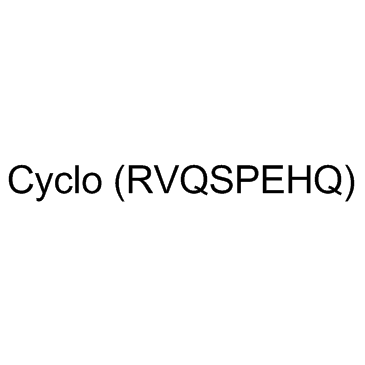| In Vivo |
The highest concentration of this peptide is 4350 ng/mL, and the majority of samples are above the limit of quantification (1 ng/mL)[1]. AZP-531 infusion prevents the increase in body weight caused by high-fat diet in mice. AZP-531 treatment prevents high-fat diet-induced proinflammatory effects, stimulates expression of mitochondrial function markers in brown adipose tissue, and prevents development of a prediabetic metabolic state. AZP-531 also prevents a high-fat diet-induced increase in acyl ghrelin levels[2]. AZP-531 is well tolerated. Single- and multiple-dose pharmokinetic variables are similar. Maximum AZP-531 concentrations are typically reached at 1 h post-dose. Observed maximum concentration and area under the curve are dose-proportional. The mean terminal half-life is 2–3 h. AZP-531 (≥15 μg/kg) significantly improves glucose concentrations, without increasing insulin levels, suggesting an insulin-sensitizing effect. AZP-531 decreases mean body weight by 2.6 kg (vs 0.8 kg for placebo). Glucose variables improve in all groups, including placebo, suggesting a study effect in uncontrolled patients at baseline. AZP-531 60 μg/kg reduces HbA1c by 0.4% (vs 0.2% for placebo) and body weight by 2.1 kg (vs 1.3 kg for placebo)[3].
|
| Animal Admin |
Rats: AZP-531 is administered in sterile water to obtain a 1 mg/kg and 0.3 mg/kg dose in the rat through both intravenous and subcutaneous routes. Blood is collected at t=0, 2, 5, 15, 30, 60, 120, 240, 360, 480 and 1440 min post-administration for the intravenous dose route and t=0, 15, 30, 60, 120, 240, 360, 480 and 1440 min post-administration for the subcutaneous route[1]. Mice: AZP531 is prepared in saline. C57BL/6J mice are infused with saline, DAG, or AZP531 continuously for 4 weeks, and fed either normal diet (ND) or normal diet for 2 weeks followed by a high-fat diet (HFD) for 2 weeks. Peptides are infused at 4 nM/kg/h[2].
|


